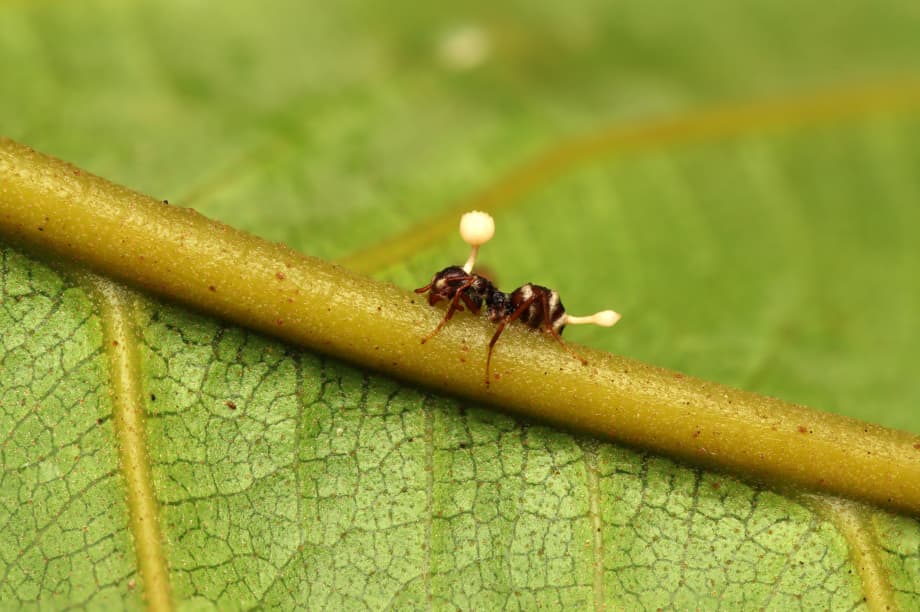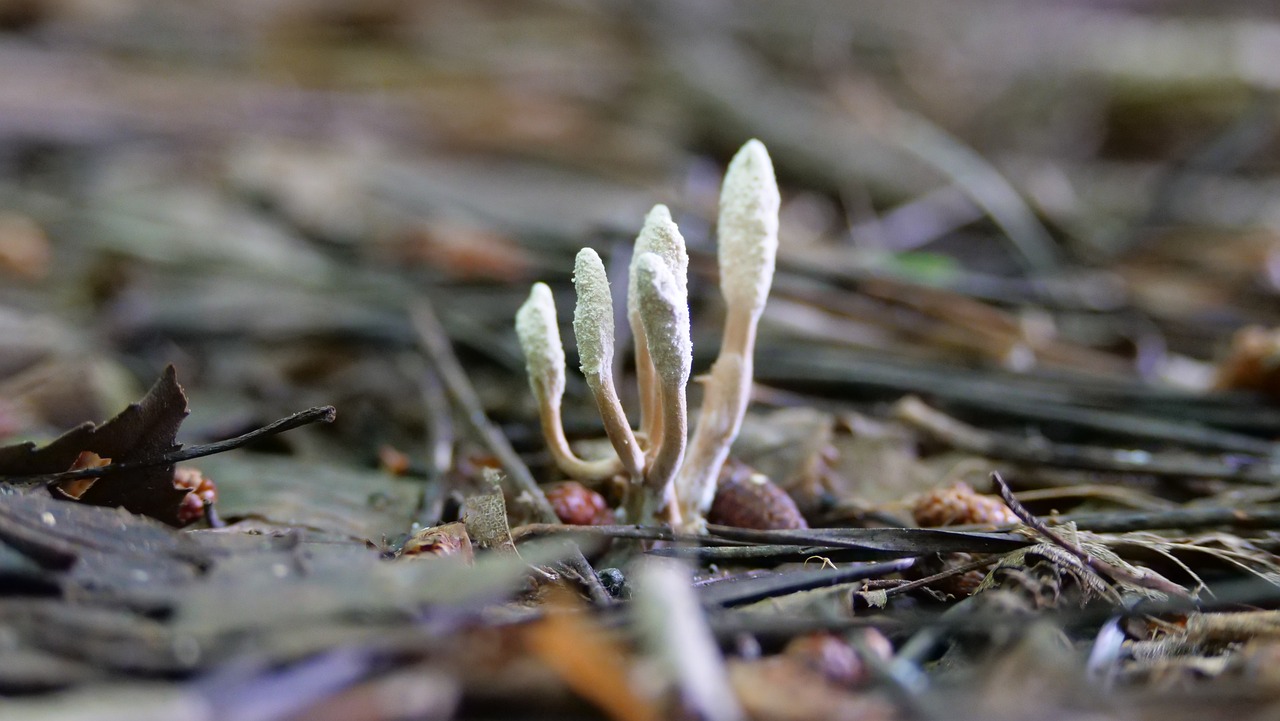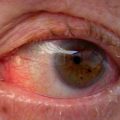In the post-apocalyptic world of “The Last of Us,” a rapidly spreading pandemic—in which a mutated Cordyceps fungus morphs people into zombie-like “infected”— besieges humanity. As the world contends in real life with a pandemic of its own, viewers may be left wondering if the HBO series’ grim portrayal of a different kind of outbreak could become an off-screen reality.
Cordyceps, or Ophiocordyceps unilateralis, is indeed a real fungus that parasitizes the brains of insects like ants or spiders. Fortunately for humankind, while mind-controlling fungal infections make for great television, there is no need to begin doomsday prepping, says Scott Roberts, MD, assistant professor of medicine (infectious diseases) at Yale School of Medicine and associate medical director for infection prevention at Yale New Haven Hospital. But while an uncontrollable, fungus-driven pandemic is highly unlikely, he continues, fungi can be a real and concerning danger to humans, and their risk is on the rise.
“Very few fungi or mold spread person-to-person, so a fungal pandemic is not too likely” says Roberts. “But with factors like climate change, we may see increasing fungal threats.”
What “The Last of Us” Gets Right—And What It Doesn’t
Ophiocordyceps unilateralis, also known as the zombie-ant fungus, is a real-life parasite, with various strains attacking specific species of insects. The spores of the Cordyceps seize control of the mind and motor functions of their host, causing erratic behaviors and spurring the insect to seek a higher location—where more sunlight and warmth create prime reproductive conditions for the fungus. Upon the insect’s demise, a fungal growth bursts from the host’s head, releasing spores that will claim their next targets.
In “The Last of Us,” a mutated Cordyceps variant begins infecting humans. But this jump from insects to people is highly implausible, says Roberts. “There are millions of different fungal and mold species out in nature that don’t cause any sort of infection in humans, and this is one of them,” he explains. “A Cordyceps that infects one species of ant cannot even infect other species of ants.”

When we go out into nature, we inhale thousands of fungal spores. Most of the time, this does not cause problems in healthy people. This is because of our functioning immune systems and high body temperatures. Most fungal species cannot grow above 98.6 degrees Fahrenheit. In fact, says Roberts, this is why some mycologists (fungus experts) hypothesize we’ve evolved to have this body temperature.
In some instances, infections can make the transition from animals to humans. The viral infection mpox, for instance, was transmitted to humans from small mammals. “But most viruses, fungi, and bacteria do not do that,” says Roberts. “There are only a rare handful that concern me. This doesn’t include Cordyceps.”
In the show, the mutated Cordyceps spread rapidly to humans through an infected food supply. It’s true that we can acquire infections through what we eat, such as norovirus or Salmonella bacteria. However, the likelihood of fungus or mold causing problems through ingestion is low, says Roberts. Many of us even consume fungal flora through probiotics and supplements. For instance, actress Gwyneth Paltrow’s lifestyle website posted a [widely criticized] recipe for 200-dollar breakfast smoothie that included Cordyceps. And even if a harmful fungus ended up in our meal, it would likely be killed off in the microwave or the low pH in our stomachs.
If a mutated fungus does find a way to infect a human, there are nearly no examples of fungi spreading among people. “Viruses are set up to spread person-to-person—we sneeze, and it can infect 20 people in the right setting,” say Roberts. “Fungal infections come from the environment—through inhaling spores or an exposed wound. And once you’re infected, the risk of spreading it to another person is exceedingly low.”
Furthermore, some fungi like psilocybin do have mind-altering properties in humans. Fortunately, these effects wear off after the fungus leaves the digestive system. “Our minds can definitely be altered by fungus, but certainly not in a chronic sense,” says Roberts. “I do not think there is any risk of that happening.”
Threat of Fungal Diseases Rises Alongside Temperatures
While most fungi species don’t pose a threat to humans, a handful can cause problems. These include Aspergillosis, Histoplasma, Blastomyces, and Coccidiosis. They rarely infect healthy people—those who are immunocompromised are the most susceptible hosts. And most of the time, existing anti-fungals can eradicate the infection.
However, while a mushroom apocalypse is likely not on the horizon, the risk of fungal diseases is on the rise. One reason for this, says Roberts, is the increasing use of antibiotics. “Antibiotic use is a huge risk factor for fungal and yeast infections because they essentially wipe out all of the good bacteria, so fungi can start to take over,” he explains. Another reason is the greater number of aging and immunocompromised individuals in the population. People are living longer than they were in past decades, and while procedures like organ transplants and chemotherapy save lives, they also weaken patients’ immune systems.
There are millions of different fungal and mold species out in nature that don’t cause any sort of infection in humans, and this is one of them. A Cordyceps that infects one species of ant cannot even infect other species of ants. – Scott Roberts, MD
In “The Last of Us” universe, rising temperatures cause Cordyceps to evolve and adapt to human body temperatures. Concerningly, this somewhat parallels real life. Climate change is another risk factor for fungal diseases that has given rise to a worrisome pathogen. “What does concern me as an infectious disease physician is a relatively new fungus called Candida auris,” says Roberts. “This fungus spreads person-to-person, which hasn’t really been reported before.” First identified in 2009, the fungus thrives in higher temperatures and may foreshadow the growing dangers of evolving fungal species. Once C. auris gets into the bloodstream, it can cause severe infections.
Other fungi from the Candida family are common in healthcare settings, where they are known for causing yeast infections. But C. auris concerns Roberts for three reasons. First, patients can pass the pathogen to others, and this has led to outbreaks across health care facilities and nursing homes. Second, it is often multidrug-resistant, leaving clinicians with no treatment options. And finally, he is concerned about the novelty of the fungus. “It emerged 10 years ago, all of a sudden, on multiple continents,” he says. “This is why we think climate change was likely one of the reasons it came about.”
The fungus has been reported in more than 30 countries. For healthy people, C. auris is not a cause for concern. However, in those who are immunocompromised, it can be deadly. And when asked if health care settings are prepared for larger C. auris outbreaks, he says, “Probably not.” He hopes that researchers can develop new, more effective anti-fungals over time, but unfortunately, there is currently little incentive for drug companies to invest. “Drugs like Paxlovid [used for COVID-19] are profitable and are going to be used by millions of people every month,” he says. “Most drug companies don’t want to spend the resources on an anti-fungal that’s only going to be used by a few immunocompromised people.” And because fungi are more closely related to humans than viruses or bacteria, creating an anti-fungal that doesn’t also harm human cells is more challenging.
Although “The Last of Us” may be more fiction than fact, Roberts says there’s a sentiment of gratitude among infectious disease specialists for the rise in awareness of fungal infections. “The show might not be realistic, but pathogens like Candida auris are likely going to get more press now,” he says. “That’s only going to help us out.”





